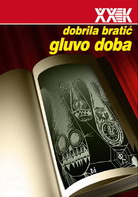THE DEAD OF NIGHT
Images of night in Serbian folk culture
Second edition, 2013
258 pages, price 700 dinars
Dr Dobrila Bratić (1953-2009) was a researcher at the Ethnographic Institute of SANU in Belgrade. The central focus of her interest was Serbian and Yugoslav mythology. She published a wide range of articles and debates on mythical creatures and related themes. Her book The Dead of Night: Images of Night in Serbian Folk Culture (first edition: Biblioteka XX Vek, 1993) offers a unique introduction to the interrogation of mythic thought, which the author interprets relying on the most important authors who have written on thi theme, but through the lens of her own theoretical constructions. This second edition of The Dead of Night is dedicated by Biblioteka XX Vek and by the colleagues and friends of Dobrila Bratić to mark the sxtieth anniversary of her birth and the twentieth anniversary of the first edition of the book. The new edition includes an appendix with remembrances of Dobrila Bratić by her colleagues Miroslava Malešević and Ljiljana Gavrilović and a bibliography of her works prepared by Biljana Milenković-Vuković.
In the introduction («Who are the nightbirds and where do they spend their days») and in six chapters («Time and trouble,» «Silence as the basic characteristic of night,» «Space in a polluted time,» «The moon and the stars – unreachable lights of the night,» «Days and nights of human life,» and «Meetings in the evil hour at a terrible place»), Dobrila Bratić, expertly and with an unquestionable literary talent, demystifies, explains and interprets images of night in Serbian folk religion. The book ends with these words by the author:
«It seems to me that contemporary processes of transformation of tratitional beliefs about the terrors night can be observed through the frames ordered by newly created civilisational modes of of eliminating the social emptiness of the dead of night. Because at the foundation of new modes of struggle lie old needs derived from the fear of ’empty time.’ In any case, there is a need in every period for struggle against the emptiness that that threatens with destruction, which means that research on images of night in contemporary conditions remains a reliable indicator of the socially constructed picture of the world which society through its behaviour inscribes on the dark canvas of the night sky.»




